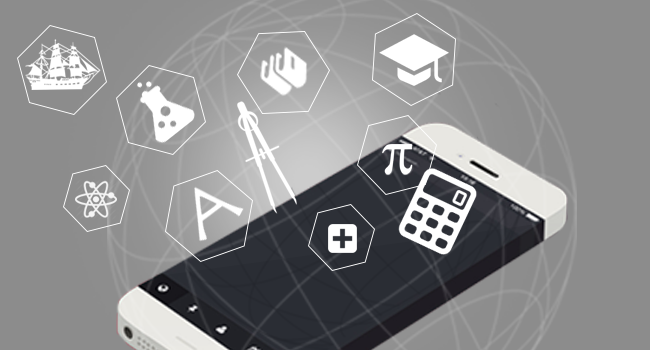Gone are the days when students used to carry heavy backpacks. During those days, teachers used to give lectures in classrooms while students sat quietly listening. Education field is undergoing an evolution where mobile devices are replacing books and lessons with apps such as smart apps for preschoolers. The mobile devices, which include smart phones, tablets, laptops etc., were once confined to our homes or offices. But now, they have found their way to class rooms. The idea is to replace the traditional learning techniques with digital learning to create a more interactive and engaging class room atmosphere that the mobile devices can offer. In fact, 52% of teachers around the world firmly believe that mobile devices can motivate students to perform better by improving their creativity, thinking and problem solving skills.
Apart from learning purposes, software have also occupied their own space in overall school management saving schools of unwanted expenses and efforts. For example, manual timetable management is quite a laborious task where errors make it tougher. There is Time table management software that makes the job easier by automatically generating timetables.
Though students were once restricted from carrying mobile devices to schools, now most schools agree that the use of such devices can bring out the potential of students to the fullest. Even parents who once were against the use of mobile devices by children are supporting the idea of integrating mobile devices in learning.
Why?
Because mobile devices can:
Prepare students for a better future
Digital literacy is the need of the hour. As an adult, you may be using technology in your everyday lives. Also, technology plays a vital role in defining career paths. Nowadays every job criterion ends with a demand of expertise in computers and latest software. In the future, the demand will get even tougher. Also, in the connected world today, mobile devices form an important part. Therefore, use of mobile devices in classrooms enable students to prepare themselves as they transition from being students to being a part of a workforce.
Keep students updated
As students, you used to refer the encyclopaedia to get more information about a topic. But, the encyclopaedia might not have been the latest version and there was no guarantee that the information you just read was out dated. Times have changed. Now, students can use mobile devices to learn more about a certain topic while knowing more about the latest updates on the topic.
Save students from carrying around stacks of textbooks
Every textbook does not carry reliable information. Also, they cannot provide students with instant and updated information like mobile devices can. Also, to carry around lots of textbooks can be a burden to the tiny shoulders. Digital textbooks can be a solution to all the problems. They give easy access to information for the students in an organized manner. Also, most digital textbooks are constantly updated, creative and less expensive than the printed textbooks.
Expand learning beyond classrooms
Traditional learning is confined to textbooks and the walls of classrooms which made students deprived of expanded knowledge on a topic. However, use of mobile devices enables students to be a part of the connected world and to expand their learning to a global level. Students can use mobile devices for doing any group work or project work or may be, they can connect with people around the world to learn more about a particular topic.
Students nowadays love technology. Therefore, introducing mobile devices in learning motivates them to learn more even after reaching home. Also, apps such as smartapps for preschoolers, digital textbooks etc. can make learning more interesting while adding to every student’s knowledge. Also, most students are always curious to know more about different topics and the mobile devices serve as the perfect platforms where they can explore and deepen their knowledge. An engaging classroom can instil interest in students, inspiring them to learn and therefore, integrating mobile devices can really transform education for a better tomorrow.
